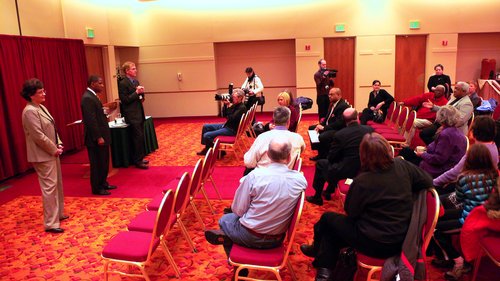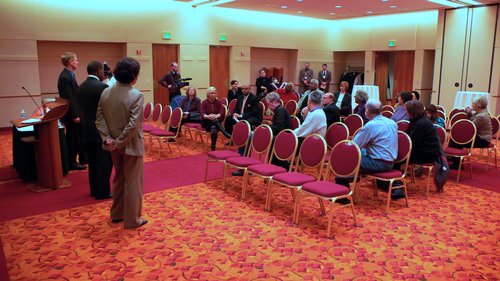Straddling the Democratic Divide
Rift in Democratic Party over the nation’s education reform agenda is growing. One side backs strong accountability through reforms, the other looks to augment the current system with social support programs.
Secretary of Education Arne Duncan’s Senate confirmation hearing in January was thick with encomiums. He was praised by Democrat Tom Harkin of Iowa for the “fresh thinking” he brought to his post as Chicago schools chief for seven years. Republican Lamar Alexander, education secretary under George H. W. Bush, told Duncan he was the best of President Barack Obama’s cabinet appointments. Ailing Massachusetts senator Ted Kennedy, in written comments entered into the record, praised Duncan for having “championed pragmatic solutions to persistent problems” and for lasting longer in Chicago than most urban superintendents.
The warm greetings given by both Republicans and Democrats on the committee reflect Duncan’s reputation as a centrist in the ideologically fraught battles over education reform. He has received national attention for moves favored by reformers, such as opening 75 new schools operated by outside groups and staffed by non-union teachers; introducing a pay-for-performance plan that will eventually be in 40 Chicago schools; and working with organizations, including The New Teacher Project, Teach For America, and New Leaders for New Schools, that recruit talented educators through alternatives to the traditional education-school route.
At the same time, Duncan maintained at least a cordial working relationship with the Chicago Teachers Union, and both the National Education Association (NEA) and the American Federation of Teachers (AFT) backed his nomination. He supported the No Child Left Behind law (NCLB), but also called for dramatic increases in spending to help schools meet the law’s targets, and additional flexibility for districts like his own. In nominating Duncan, Obama said, “We share a deep pragmatism about how to go about this. If pay-for-performance works and we can work with teachers so it doesn’t feel like it’s being imposed upon them…then that’s something that we should explore. If charter schools work, try that. You know, let’s not be clouded by ideology when it comes to figuring out what helps our kids.”


